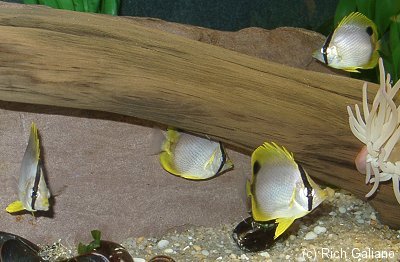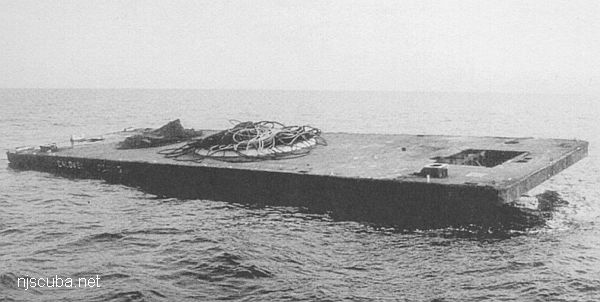Aquarium Guide - Water
Freshwater
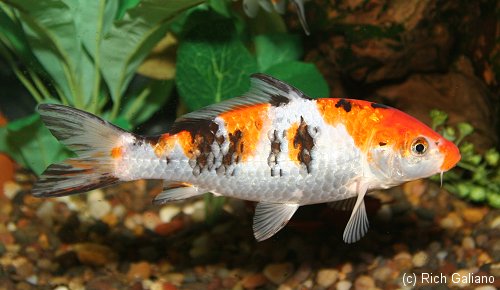
If you can drink it, then your tap water is probably OK to use in your aquarium. This is especially true if the water comes from a municipal supply. If your water comes from a well, this is less certain. There are several factors to consider in water quality: pH, hardness, chlorination, and other chemical contents.
pH is a measure of how acid the water is. The scale runs from 1.0 ( most acid ) to 7.0 ( neutral ) to 14.0 ( most alkaline ). Most freshwater tropical fish prefer slightly acid or neutral water - pH 6.5 - 7.0, although there are notable exceptions. In my town, the pH of tap water is about 8.0, while well water from nearby is closer to 5.0. Fish wastes tend to cause aquarium water to become more acid over time. In my case, the alkalinity of the tap water counteracts this. However, I have seen the well water kill Goldfish! pH test kits are inexpensive and well worth it. There are special chemicals available for treating pH, but I would only use them under extreme circumstances. Generally, the range 6.0 - 8.0 is tolerable for freshwater.
Hardness describes the amount of dissolved salts in the water. Distilled water is as soft as it can get, while seawater is off the scale in hardness, as far as we are concerned. Again, municipal water is probably not a problem, but well water may be. There are test kits for this also, but I wouldn't bother unless I knew there was a problem. Ask around. Most fish will tolerate a wide range of hardnesses. Most fish will also tolerate a degree of iron in the water as well.
Saltwater
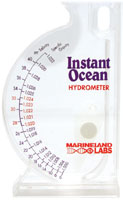
Most saltwater aquarists have no recourse but to make their own saltwater from store-bought salts. This has the advantage of making near-sterile water, but it can also be expensive. If you live near the shore, you might be better off investing in some 5-gallon buckets with lids, especially if you intend to keep local fishes and invertebrates. The easiest place to get clean seawater is from a bulkhead near the mouth of a river, on an incoming high tide. This will be nearly pure clean seawater. It may also be full of plankton, a treat for some aquarium creatures. Unfortunately, there is no telling what else may be in the mix, and you could introduce parasites, viruses, bacteria, and other disease. For wild-caught fishes in good health, this should not be a problem. A good filter will quickly clean up not-quite-clear water.
Saltwater aquaria should be kept at a pH of 8.0-9.0. All aquaria tend to acidity over time. While this is usually not a problem in freshwater, it is death to a marine tank. Crushed coral is the best way to counter this trend and keep the pH buffered in the correct range. See the section on filters for a great way to incorporate this material in your aquarium filter.
Local seawater has a specific gravity of about 1.022 for full ocean salinity, down to around 1.015 for brackish water. In any case, a good quality hydrometer will be needed to determine the salinity of the water. The Marineland model at right is widely regarded as accurate for aquarium use, and is also inexpensive, easy to use, and can be taken into the field. Float-type hydrometers should be avoided, as inexpensive models are seldom usefully calibrated or accurate, and are also fragile and bothersome to use.
For a fish-only aquarium, reducing the salinity below full-ocean levels can be advantageous. Many of the fishes you will collect will come from such brackish environments in the first place. Reduced salinity reduces osmotic stress on the fishes, improves oxygenation, kills many pests and parasites directly, and eases many of the chemical and biological difficulties inherent in a marine aquarium. Most crustaceans, starfish, anemones, and other invertebrates can also handle brackish water, but urchins cannot.
Water Changes
Regular partial water changes are just as essential as filtration. Water changes remove harmful proteins, salts, and chemicals that the filter will not. They also replenish trace minerals and mediate pH levels in the tank. Many fish benefit directly from just the change, which can be thought of as simulating a rainfall or natural water flow. Simply refilling the tank as the water evaporates is not the same, as this causes chemicals to build up in the water. Water changes should be 15-20% every one or two weeks.
The best thing for getting water out of a tank is a siphon with a flared end, like the kind any pet store will sell. While siphoning, you can jab the big end of the siphon down into the gravel, and vacuum it out. It is amazing, all the tiny critters that live down there, that you never thought were there. Don't worry, though, they don't do any harm, and may actually be eaten by the fish. Just be careful if you have any fish that like to bury themselves, they could be injured.
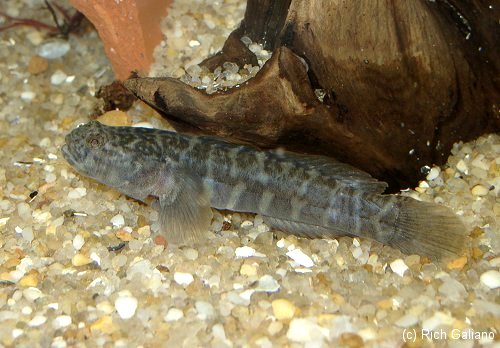
For freshwater, ordinary tap water can be used for replacement, provided the temperature is equal to or slightly lower than the tank temperature, and the pH of your local tap water is not too extreme. Chlorine is not a problem at these levels, and I don't recommend the de-chlorinating chemical that your local pet store will try to sell you. If larger water changes are needed, you should age the water for at least 6 hours or so in non-metallic containers with large open surface areas, i.e. - buckets, not milk jugs. This will allow the chlorine to escape, and some oxygen to dissolve. An air stone will speed the process if you have an extra one. Periodic stirring will also help. Just prior to using it, you can adjust the temperature by adding small amounts of very hot water or ice and stirring. If possible, siphon the replacement water back into the tank, otherwise pour it in slowly and carefully.
For saltwater, the process is similar, with the addition of aquarium salts. Use your hydrometer to match the salinity of the tank, unless you are deliberately trying to change it. Alternatively, if you started out with natural seawater, you can just go get more, and use that. I try to keep several buckets on reserve. For brackish water, seawater can be diluted with tap water before adding it to the tank.
Water Treatments & Test Kits
In general, I do not believe in water treatment chemicals. The aquarium industry thrives by selling these sorts of things, and the times I have tried any of them, they did not fix the problem. If you have water problems, try a water change before trying any additive. Most water problems come from overcrowding - try removing some fish. The only exception is plain old aquarium salt, which is naturally occurring anyway. Don't use iodized table salt, however, that's poisonous to fish ( figure, they have to live in it ). The only other product that I use is Acurel F. This product is pretty effective at clearing that whitish cloudy water in new tanks, but if you need it after that, then there is something else wrong.
There are many water chemistry test kits available. The most common ones are: pH ( several ranges ) freshwater hardness, nitrate, nitrite, and ammonium. Of these, the pH test is essential; the rest are of doubtful usefulness. I have little faith in the accuracy of the low-end inexpensive test kits, and little belief in the necessity of the high-end expensive kits. For a saltwater tank, you will need a device to measure salinity or specific gravity.
Use Your Nose
One of the best ways to judge the water quality and health of an established aquarium is to use your nose and smell it. A healthy freshwater aquarium should have no smell, or a slight earthy smell, like potting soil. Any rotten or sewage-like smell is a sign of trouble - do a 10-20% water change immediately, and look for the cause - uneaten food, a dead fish in a corner, fouled gravel, etc. Continue daily water changes until the bad smell goes away.
Likewise, a healthy saltwater tank should smell like the ocean surf - slightly salty but clean. Any strong, foul, or muddy smell is a sign of trouble - treat as above. If you live near the shore, you could think of this as the difference between a nice salt spray smell at the beach and a low tide smell on a mudflat. Check the odor of your aquarium daily - it's the cheapest and easiest water quality test there is!

